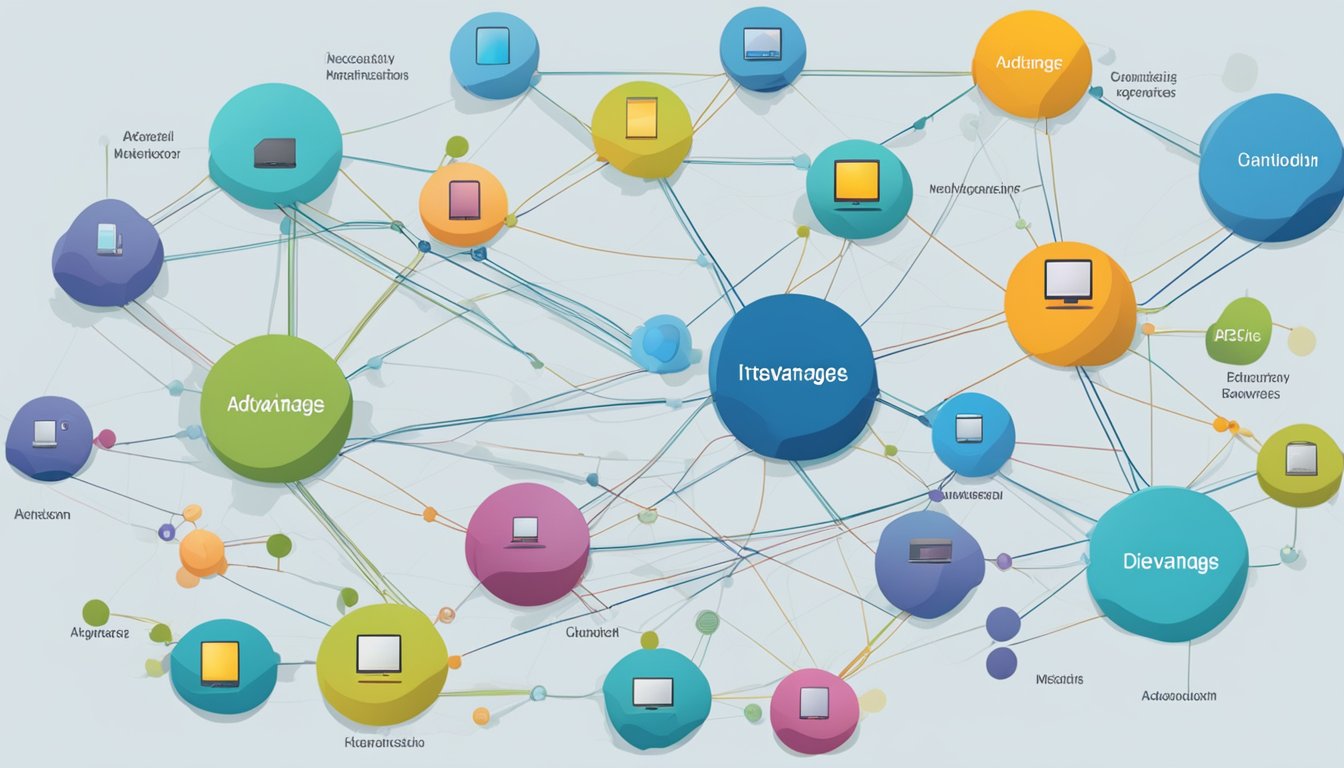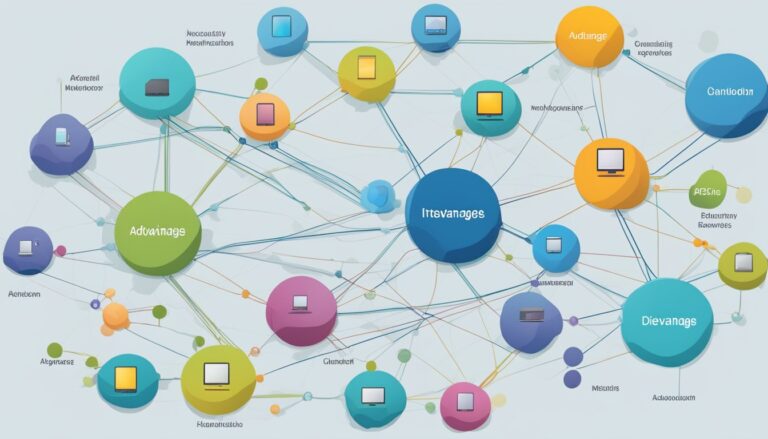Understanding Network Fundamentals

Understanding the basics of computer networks is key to grasping how data is exchanged, shared, and managed across various devices.
It includes knowing different network types, topologies, and the standards that govern communication protocols.
Types of Computer Networks
Computer networks vary in size and scope. Local Area Networks (LANs) are confined to a small geographical area like an office.
They allow multiple devices like computers and printers to connect and share resources. Wide Area Networks (WANs) cover larger areas, connecting smaller networks over long distances, such as cities or even countries.
The Internet itself is a global WAN.
Personal Area Networks (PANs) cover short ranges around an individual, such as connecting a smartphone to a laptop via Bluetooth. Metropolitan Area Networks (MANs) cover a city or a large campus, offering high-speed connections within that area.
Network Topology Concepts
Network topology refers to the layout of various devices, or nodes, in a network. Star topology connects all devices to a central hub or switch, allowing efficient data transfer but with a single point of failure. Bus topology connects all devices to a single backbone cable; it is straightforward but can slow down with heavy traffic.
Ring topology links each device to two others, forming a ring for data to travel around.
If one node fails, it can disrupt communication unless a secondary ring path is available. Mesh topology offers redundancy by connecting every device to several others, providing high reliability at a greater cost and complexity.
Communication Protocols & Standards
Protocols are sets of rules that allow devices to communicate over a network.
The Internet Protocol (IP) is one of the most crucial, defining how data packets are addressed and routed across networks.
The IEEE 802.11 standard specifies wireless LAN protocols, crucial for Wi-Fi connectivity.
Ethernet is widely used for wired network connections, governed by protocols ensuring reliable data transmission. Virtual Private Networks (VPNs) use encryption protocols to create secure connections over the Internet, essential for protecting sensitive data in transit.
Understanding these standards helps ensure interoperability and security within a network, enhancing overall performance and reliability for all connected devices and applications.
Exploring Network Operations & Performance
Network operations and performance are crucial for efficient and effective communication in the insurance industry.
By managing resources, monitoring network performance indicators, and addressing security and privacy concerns, you can ensure the reliability and efficiency of your network infrastructure.
Resource Sharing & Management
In the insurance industry, resource sharing and management enable seamless communication between various branches and departments.
Tools like email servers, printers, and cloud storage can be centralized, allowing for better coordination and access.
Implementing resource sharing also includes utilizing network storage solutions such as Storage Area Networks (SANs) for enhanced data storage capacity.
Advantages of resource sharing include cost reduction and improved access to critical applications.
Centralized management also helps in deploying updates and maintaining uniform configurations.
Utilizing virtualization technologies allows multiple applications to run on a single server, optimizing server usage and reducing hardware expenses.
However, the initial setup can be expensive and may require specialized training for your IT staff.
Ensuring reliability of shared resources is essential to avoid disruptions in your operations.
Network Performance Indicators
Monitoring network performance indicators like bandwidth utilization, latency, and packet loss is vital for maintaining efficient communication.
In the insurance industry, low latency and high throughput ensure that applications like client-server software and e-commerce platforms function smoothly.
Bandwidth utilization measures how much of your available bandwidth is being used and can help identify bottlenecks.
Latency, or delay in communication, affects real-time applications like customer service calls or video conferences.
Packet loss can disrupt data transmission, leading to errors and requiring retransmissions.
Many organizations aim for high network availability, often targeting “five nines” or 99.999% uptime to ensure continuous operations.
Using cloud computing and virtualization can help improve performance by leveraging scalable resources.
Security and Privacy Concerns in Networking
In the insurance industry, protecting customer data is paramount.
Implementing robust security measures like firewalls, encrypted connections, and access controls is essential.
Secure handling of personal data ensures compliance with regulations and maintains customer trust.
Network security involves using algorithms for data encryption and setting up IP addresses and access points securely to prevent unauthorized access.
Implement secure communication protocols for transactions and use modems and routers with updated firmware to protect against vulnerabilities.
Privacy concerns include safeguarding sensitive information against breaches.
This involves continual monitoring, installing reliable antivirus software, and conducting regular security audits.
Addressing these concerns ensures safe and compliant operations, promoting customer confidence in your services.
Advantages and Challenges of Computer Networking
Computer networking has transformed the way we share resources and communicate.
It enhances connectivity and application performance but also presents certain challenges that require effective mitigation.
Pros of Network Connectivity & Applications
Computer networks enable resource sharing among multiple devices.
This means you can share printers, scanners, and storage capacity without needing separate equipment for each device.
This not only saves costs but also makes efficient use of resources.
Internet protocols and communication standards ensure seamless data transfer and connectivity across various computing devices, such as smartphones and routers.
This setup allows for better and faster performance of applications and services.
Networks, such as a home area network (HAN) or a campus area network (CAN), offer localized connectivity, making it easier to manage and secure devices.
Large networks like wide area networks (WAN) support extensive connectivity across different locations, enabling global communication and business processes.
Cons of Networking and Mitigation Strategies
Setting up and maintaining a computer network can be expensive.
Initial costs include purchasing routers, cables, and other necessary hardware.
Ongoing expenses for training and maintenance can also add up.
Ensuring reliable communication protocols and robust network architecture is key to long-term functionality.
Privacy and security concerns are significant, especially in large networks. Virus and malware attacks can compromise data integrity and security.
Employing firewalls and antivirus software, along with regular monitoring, helps mitigate these risks.
Reliability is another challenge.
Network failures or interruptions can disrupt operations.
Implementing redundancy and regular backups ensures continuous processing power and data availability.
By understanding these challenges, you can better prepare and implement strategies to maintain an efficient and secure network.






